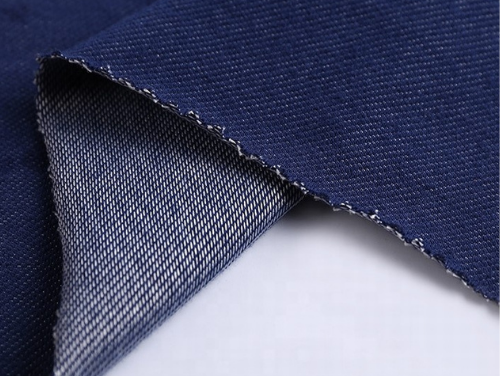Twill
Despite the fact that denim has been around for centuries, it is today more trendy than ever. The term ’twill’ merely refers to the sort of weaving pattern used in the fabric’s production. Denim is normally woven with a white weft and an indigo coloured warp.


Fabric Products

Detailed Information
A twill is a diagonally interwoven pattern in which the warp and weft are intertwined at a 90-degree angle. The feel of the fabric is determined by the direction in which the threads are weaved, and it has an impact on how the fabric will fade over time. Right hand twill, left hand twill, and broken twill are the three most prevalent twills used in denim weaving. Levi’s pioneered right hand twill, also known as RHT and ‘z twill,’ as their standard fabric, and it is now the most widely used style of twill in the industry.
Left hand twill, often known as LHT or’s twill,’ is the polar opposite of right hand twill and was formerly the standard cloth for Lee. Wrangler created a broken twill to eliminate the leg twist that occurs while washing right- and left-hand twill fabrics due to the strain. Broken twill resembles a random zig-zag pattern rather than going left or right.






Key Attributes
Fabric Products
The diagonal rib pattern is a defining feature of the twill weave. Twill weaves feature a distinct front side (called the wale) that is generally darker in colour than the back. Twill has a high thread count, which means it’s opaque, thick, and long-lasting.
- The fabric is very durable.
- The fabric doesn’t wrinkle easily because of its thickness.
- It is soft, breathable and comfortable to wear.
- It absorbs water and dye easily.
- It is heat resistant and holds up detergents well.


